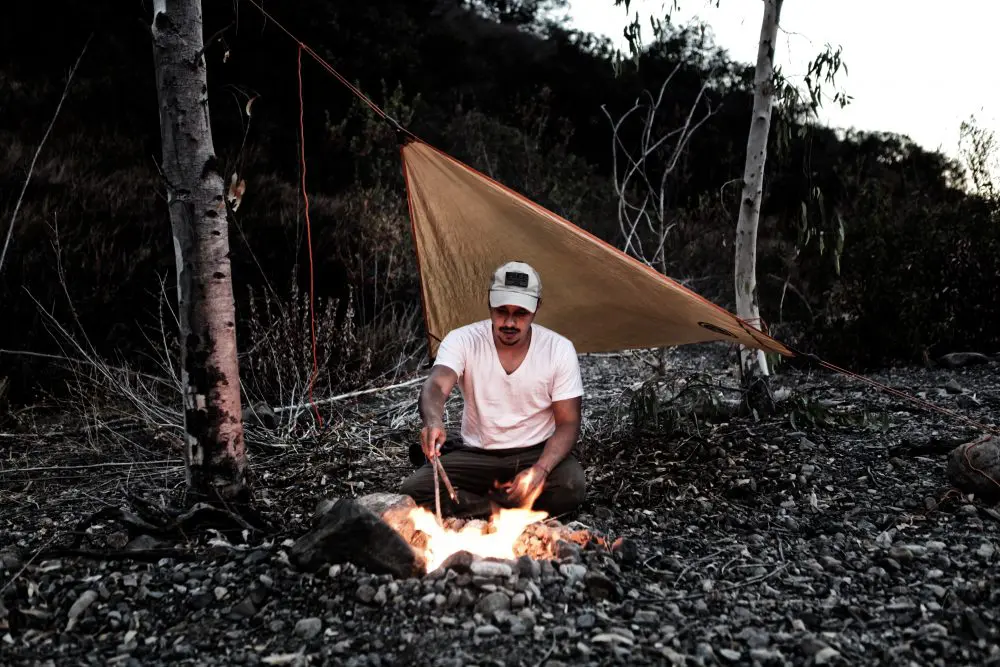Although overshadowed by the patrol rifle concept in most cases, there still appears to be a need for the submachine gun (SMG) in some law enforcement circles, as it is alive and well in many departments.
The catalyst for me to take a close look at the SMG as a deployed tool started when I was asked to help develop a SMG Operators Course in my departmental role as a firearms instructor. Having been tasked in that role for the previous five years, I figured it would be a good time to start from the “ground up” and develop a focused training curriculum otherwise known as “SMG 101”. If you are a firearms instructor or SMG operator, I hope that this article will help you in your efforts.
Colt 9mm SMG and ammunition for testing.
Table of Contents
WHY THE SMG?
Why even consider the SMG? In a world where the patrol rifle is fast becoming the primary “long arm of the law,” one might ask, why go with the concept of deploying short-barreled 9mm SMGs when the rest of the world is going with a carbine? How about these five reasons:
First, with the DOJ and other Federal LE units having switched from the SMG to carbine/rifle platforms, there are “used” SMGs available via proper channels at a very attractive cost (free) for qualifying departments.
Second, there have been, and continue to be, substantial ammunition technology improvements as compared to past years, which previously made the SMG platform less attractive as a long gun.
Third, the SMG offers a handy compact package of firepower for those who primarily serve warrants where virtually all of the criminal-element encounters are up close and personal.
Fourth, the 9mm cartridge is significantly quieter and produces much less muzzle blast and concussion when fired within close quarters inside a structure as compared to a .223 carbine/rifle.
Finally, the Colt SMG system is easy to train officers on if they have already trained on the Colt AR/M-16 rifle.
Firing SMG from 25-yard line.
SMG TRAINING COURSE
I received a call asking me to put together an SMG training course for our department narcotics unit. Before saying yes, I had to ask, “Why me…?” The answer I received went something like, “Who else in the entire department has more trigger-time on machine guns than you?” I had to admit that the answer to that question was probably nobody. So with that, I had my orders and was off and running.
As part of my preparation, I started an extensive search for past SMG course materials and enrolled myself in an SMG Operators Course to refresh myself on the basics. Course materials started coming in from a variety of sources, and although all of it was good stuff, I wasn’t convinced it was good enough for our needs. I decided it would be best to use existing material as references but basically create an entire course from scratch. Luckily, I had the help of three fellow instructors to ensure the path we were taking was validated and refined as we went along.
CQB drill.
Previous course materials from the DEA, NRA and other law enforcement agencies helped a lot. I also referred back to some of my personal training experiences with instructors such as Louis Awerbuck, Tom Dresner and Pat Rogers, men who helped me get to where I am today.
I decided to introduce a variety of photographs and video clips into our classroom materials/presentations, and that turned out to be a good decision. The old saying that “a picture is worth a thousand words” remains true. Students commented that the videos were the best part of the classroom training, because they took away any anticipated “unknowns” about what would be expected of them during range training and live-fire exercises. Almost every basic range drill was videotaped and used in the classroom prior to hitting the firing range. In retrospect, this gave the group the opportunity to progress into a more advanced training exercise than anticipated. Such is the nature of training. The best plans often need modifying to adapt to the particular level of student proficiency, and this class was no different.
Transition drills from SMG to sidearm.
TRAIN YOURSELF FIRST, AND KNOW YOUR STUDENTS’ NEEDS
Since I had never worked with our narcotics team intimately, I needed to learn more about what they actually do on a day-to-day basis, so I spent some time with them. It was quite an eye-opener, and allowed me to tailor the training to fit their particular needs. In a nutshell, our team of eight officers serve approximately 300 high-risk warrants a year, doing some of the most dangerous work our department is involved in.
Operating in high-risk circumstances, our narcotics officers have to rely on speed, situational control and, when necessary, overwhelming force. My hat is off to them, as they are some of the best folks I’ve worked with in a long time — totally dedicated to their work and working as a team to get the job done. Knowing this also reminded me that I needed to continue to take my job of teaching them in the use of the SMG seriously after learning what their particular needs were. I owed it to them to make it the best training course that I could, as their (and other) lives could very well depend upon it.
It is vitally important to know exactly what type of training your people need, how they will deploy with the weapon system and what their expectations are. The instructor also needs to be intimately familiar with the system and have the proper training with it. Knowing the answer to these helps ensure the course material covers areas that are truly needed—not just taking up space and time as filler material. Each training segment should be tailored to meet these unique needs as much as possible. Other factors to consider include knowing how much time is available for said training, how much ammo is available, how much money can be spent, having qualification and re-qualification requirements accurately defined, and addressing specific equipment issues.
Range drills were run with officer wearing full equipment.
CLASSROOM
Introductions and essential reviews of our department policy and state law related to use of force, legal issues and course objectives were covered first during the classroom portion of SMG Training. I let the students know right up front they were getting a combination of my own personal training previously received at other courses, and that we would also incorporate standard handgun skills, along with some patrol rifle and carbine tactics into their SMG Training. Range drills, sidearm transitions and expected student performance requirements were all defined early in the course material. The information flowed logically, with continued emphasis on safety as our number one priority.
Since this was a new course for our department, feedback was requested from the students as the day progressed. We focused the classroom materials around a lot of hands-on work performing detailed disassembly and assembly drills while getting used to the appropriate nomenclature and function of each part of the SMG. Some of the students had never touched—much less fired—a machine gun, so the basics had to be covered in a way as to get those individuals up to speed with those who had more experience.

TRIGGER TIME
The effort put forth during the classroom activities certainly paved the way for the range days to come. Our students arrived early and ready to go. They were more energized than the usual group we normally see that shows up for firearms training, and it was good to see their eagerness to learn.
I suppose there’s just something about machine guns that make grown men revert back to being wide-eyed kids again. Even though the fun-factor is there, it’s important to continuously hammer home the seriousness of the training and the safety aspects. After more safety briefings, equipment checks, and looking at other details, it was time to make ready.
Range drills the first morning revolved around initially sighting in the guns at 25 yards and moving in to 15, seven, and three yards to get a feel for the sight-to-bore offset and how it affects sight picture and point of impact. It also allowed the group to settle down a bit and reinforce the basics of proper sight picture, sight alignment and trigger control. We then progressed to double-taps on single and multiple targets at varying distances. Soon we had the group performing three-round burst drills until the gun ran dry, allowing immediate transition to the sidearm, followed by reloading, recovering and engaging (RR&E) with the SMG. We repeated the basic drills up until lunch, at which time an ammo count indicated we had fired around 600 rounds each. Things were progressing smoothly (and better) than I had expected.
There are planned range drills, and then there are modified drills that can be interjected based on a group’s experience and progress in any particular course. The “Basics of SMG 101” included the following:
- Proper stance
- Trigger control
- Sight alignment
- Sight picture
- Semi-auto fire
- Proper reloading techniques
- Stoppages
- Proper backup weapon transitions
- Full-auto fire and burst drills
- Full magazine bursts
We ran drills on single and multiple targets on the square range, which expanded into moving drills forward, backward and sideways—individually and then as pairs.
Once the confidence levels were there, we incorporated one of my favorite drills brought forth by Colonel Jeff Cooper—the El Presidente. For those not familiar with the “El Pres,” it is a drill where the student begins facing away from the targets and must turn the entire body to engage. The shooter stands at the ten-yard line, and three targets are placed one meter apart. At the starting signal, the shooter turns and draws, fires two shots at each target, reloads, then fires two more shots at each target. We ran all students thru El Pres individually and with a partner. We also ran a modified version of El Pres incorporating moving sideways and forward and backward while firing.

NO MISSES!
I know my students got sick of my continued harping on two topics—safety and zero misses. My “no misses” policy was verbally repeated before each range exercise to ensure that by the end of the course, we actually had (you guessed it) “no misses.” The policy was eventually engrained in everyone’s gray matter, and the alternative concept of “spray-and-pray” was never even remotely considered. Since I prefer to lead by example, I demonstrated every firing technique to a class before running them through the drills. I found it entertaining that the class as a whole really got into this “no misses” doctrine, as they were even reminding me about the policy when I forgot to.
It is interesting how full-autos can make people enjoy shooting more, but it was serious work we were doing, so the appropriate reminders were interjected from time to time to bring the group back to reality. The more advanced range drills did just that, as it allowed the team to incorporate some of their own concepts they use regularly in regard to tactics. My purpose wasn’t to teach them specific tactics, but the interface with my goals of teaching them the proper use of the SMG, along with their own input in these areas, made for a great course adjustment.
WHY TRAIN?
In such courses, it is good to remind everyone why we train. If you ask any particular person that question, you will get a variety of answers. To give the individual something to think about and perhaps provide some incentive, it might be good to suggest we train for the following reasons:
- Yourself: you train for yourself, so you can have the confidence that comes from knowing you can perform your job duties, and to protect yourself as need be.
- Your family: you train for your family, so you can come home each day, and also to protect them if need be.
- Your partner: you train for your partner and for his/her safety, and for the knowledge and confidence that you can perform your job at all times.
- Your department: you train so you can perform your job, stop, and/or apprehend the bad guys safely and effectively.
I know the above sounds simple enough, but ponder each of the four points above for a while and think about what could happen if you failed in any of them. I’ve seen the results of failure in the above areas, and it has never been pretty. Often it resulted in disaster and life-long repercussions. Additionally, I always cover the mindset doctrine set forth by Colonel Cooper—no need to pave new road when those who have come before have set the standard.
TEACHING AIDS
Another important aspect is classroom teaching aids and range equipment. After the basics are covered, getting students off the square range and into more challenging movement exercises is important. Getting them engaged in a variety of multiple targets is also necessary. Use of metal pie-plates and pepper poppers is one fairly simple, yet effective way to get people’s minds focused. We used Birchwood Casey “Shoot-N-C” targets when needed, and they came in handy by allowing immediate visual feedback when engaging at both short and long distances. Other targets should include hostage and other realistic good-guy/bad-guy exercises. Moving targets are also excellent training aids to incorporate when possible. Use of a timer/buzzer system is needed and provides time constraint pressure and feedback to the individual shooter and to the group.
Besides the basics, the SMG system itself needs to be thoroughly tested and reliability established. If you have a firearm that continues to malfunction, you have a liability that obviously must be corrected. The same goes for ammunition. When incorporating the fast cycle rates that the SMG provides, powder burn rates and bullet designs become a bit more critical in nature. We had several ammunition brands that failed to perform to our satisfaction and we had to make corrections to this in stride. We also allowed students to shoot several 100-round C-Mag dumps (thank you, Beta Company!), which is a good exercise to help determine the SMG’s reliability, and also helps one get a feel for which types of ammo function best. In other words, feed your SMG copious amounts of ammunition to ensure it likes it.
FINAL DRILL
The final qualification drill we developed required a total of 100 rounds of ammunition (including both SMG and sidearm), and called for the engagement of single and multiple targets from three to 25 yards in distance under realistic time constraints. The drill required both simulated and run-dry transitions to the sidearm. It included semi and full-auto bursts and obviously mandated the “no misses” doctrine for successful completion. Each individual target was graded accordingly. Having the time to spend a week with the members of this unit, we felt we had adequately imposed enough stressful shooting scenarios to allow both the operator and the instructor to be cognizant of behavioral traits that manifest under stress. Close range and high-speed drills help determine these traits. Those who needed additional work received the opportunity to repeat exercises.
FUNCTIONAL TESTS and AMMO SELECTION
The training wasn’t complete until successful functional tests and SMG sight-in of duty ammo had been accomplished. That exercise turned out to be more than anticipated, as the issued duty ammo did not reliably cycle the guns. Adding in the variable of hollow-point ammo into a gun system that was primarily designed to digest ball ammo delayed deployment until we could test a variety of sample ammunition and loads to ensure 100% reliability and accurate delivery. It’s not surprising to find out that some things just don’t work, and wringing out your equipment and gear in training is one of the best ways to determine what does and doesn’t work. We were no exception to that general rule of thumb.
The duty ammunition selection process was a real eye-opener. Laying out various brands and bullet designs at the range, we essentially fired each and every gun simultaneously with the same ammunition to allow operators to feel, hear and see how the SMGs reacted to different loads. We initially chose factory ammo offerings and bullet designs that had previously been acknowledged as meeting the FBI ballistic testing protocols, and then focused in on reliable functioning as our number one requirement. Testing also included firing the top three selections into various mediums such as rock walls and other targets, to get a feel for penetration and expansion characteristics. It was not what I would call a totally scientific study or anything near a professionally run ballistics workshop, but it did answer the question as to which ammunition fed reliably in the guns.
We eventually got there, but it took some time to down-select the ammunition and get our people deployed. Thanks to the folks at Black Hills Ammunition, we achieved mission success with regard to ammunition selection and deployment.
Overall the course was very successful. Using material from carbine classes that I have attended, and then modifying it to meet my department’s particular needs, was only the first step in creating this course. Feedback from those who are at the point of the spear and will be using this weapon system on the street put on the final polish. While the SMG has taken a back seat to carbines in the last few years, with good training and knowing its limitations, it is still a very viable weapon system.
SOURCES:
The BETA Company
Dept. S.W.A.T.
2137B Flintstone Drive
Tucker, GA 30084
(770) 270-0773
www.betaco.com
Birchwood Casey
Dept. S.W.A.T.
7900 Fuller Road
Eden Prairie, MN 55344-2195
(800) 328-6156
www.birchwoodcasey.com
Black Hills Ammunition
Dept. S.W.A.T.
P.O. Box 3090
Rapid City, SD 57709-3090
(605) 348-5150
www.black-hills.com
Colt Defense LLC
Dept. S.W.A.T.
P.O. Box 118
Hartford, CT, 06141
(800) 241-2485
www.colt.com/law/home.asp











